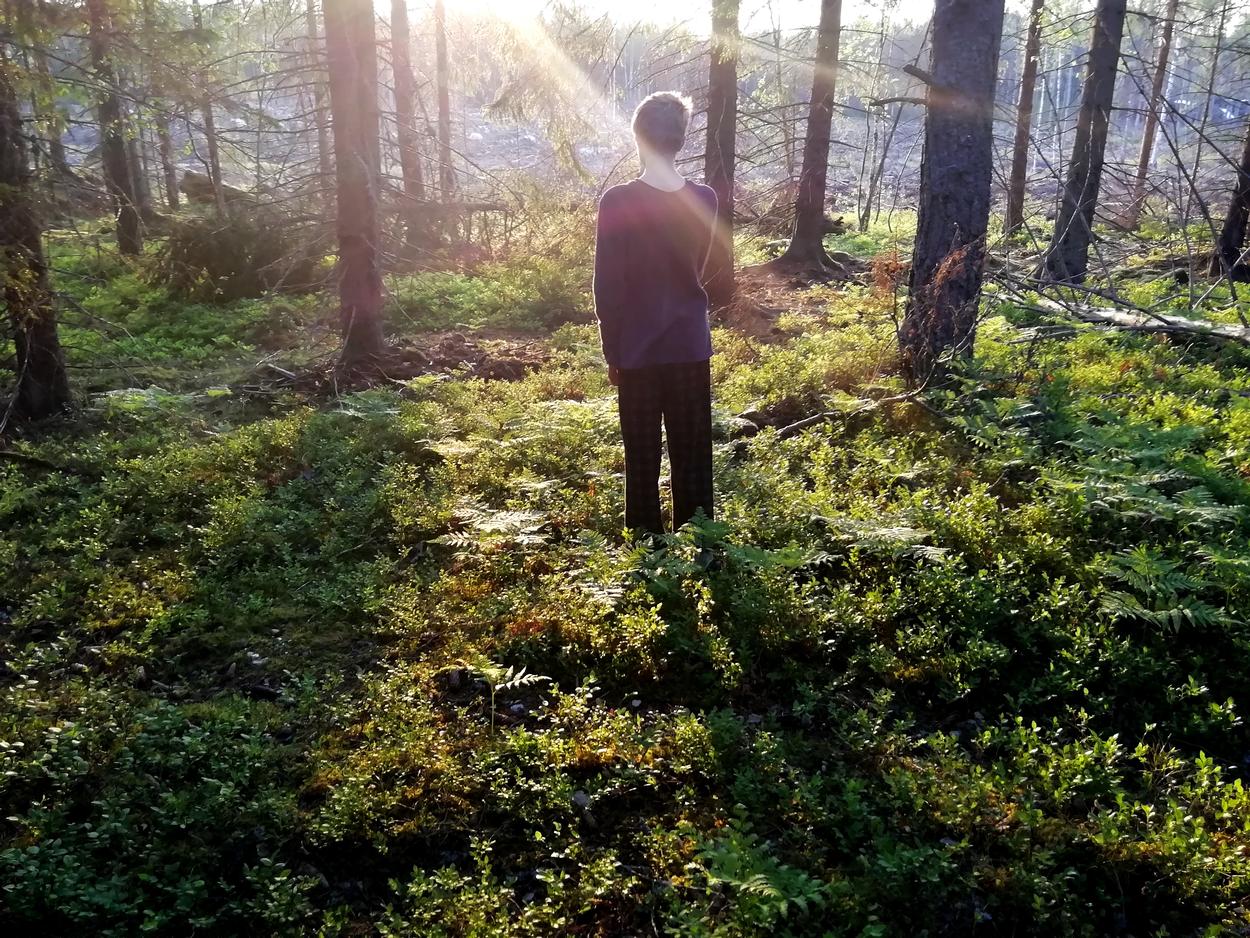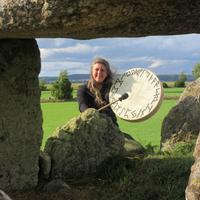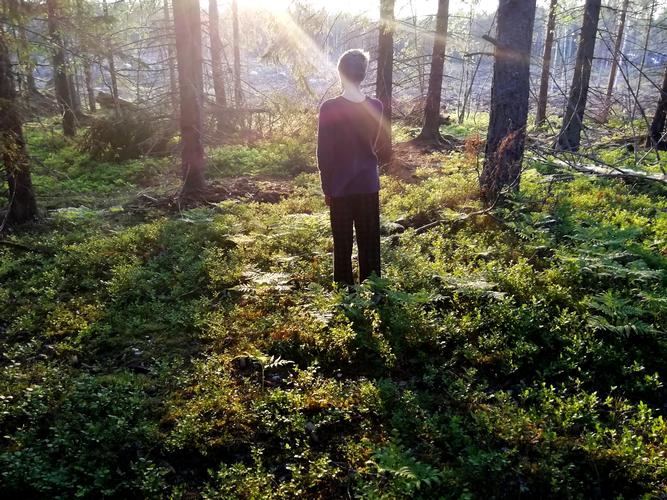
The day you give birth to a child, the world suddenly becomes a more menacing place. You vow to do everything in your power to keep your precious baby safe. You invest in stair gates and baby monitors. You teach them how to cross the road safely (not just once, but for years). You warn them of stranger danger (even though statistics show that children are - in the majority of cases - harmed by family members and people they know). At night you tuck them up in their beds and you allow yourself to relax, thinking that they are curled up in the safest possible place until tomorrow morning!
On Thursday last week we gave our youngest son a hug before bed and wished him sweet dreams. He had just flown from London to Sweden that evening. While he slept, our life changed. The following morning, he woke us up complaining of severe pain. (To respect his privacy, I will leave out the specifics). My husband was casting around for the phone number of a Swedish medical helpline, but I suggested we bundle him in our car and drive straight to A&E (“Akuten” in Swedish).
Our house is situated in the forest in a remote rural area and calling out an ambulance would only have doubled the time it took before he received help. The three of us stumbled into Akuten. Our son had started to turn blue. During the car journey he was breathing and panting to manage the pain – not unlike a woman in labour. The nurse on reception took one look at him and told us to forget about the waiting area and get him straight on stretcher.
We opted for some “shamanic pain management”: we asked a powerful spirit ally to come and “eat the pain”. It helped too! He managed a smile and joke after that.
Very soon we found ourselves in a room with three doctors who explained that he needed emergency surgery. That they would try to save the organ affected – but if not, they would take it out to save his life.
I was asked to give him a shower and scrub with medical soap pre-op - I stayed wet for the rest of the day as he accidentally showered me too.
We kissed him goodbye before they wheeled him into theatre. The nurses told us to go for a walk or to the cafeteria as the procedure would take at least one hour. Two shell-shocked parents tried to force down some lunch in a completely deserted cafeteria. It was a public holiday (long weekend) in Sweden due to Ascension Day. The hospital was closed, except for emergencies and childbirth.
Two hours later we received the phone call from theatre: could we please come to the Recovery Ward and the surgeon would meet us there and talk to us. Apprehensive is too mild a word!! As the procedure took so long, we expected bad news but hoped against hope.
The surgeon was kind. He took his time and allowed us to ask questions. He said that the excruciating pain in the morning had been caused by necrosis (organ failure – the death of a body organ). They had tried to revive this organ (and given this process double the amount of time set in medical guidelines because this case concerned a child with his life ahead of him). They were not successful. The organ concerned had turned blue-black. Not only that, he explained, but a dying body part will send death cells and death messages to other body parts – which is another reason to get it out as soon as possible. He believes that it actually died during the night, while our son slept. Due to deep sleep he would have missed the warning of the early pain signals.
This was followed by a consultation about managing the implications of this loss, his future, certain restrictions that will now apply, living with what amounts to a small but significant disability (in the literal sense of the word: not being able to do all the things that average healthy boys his age do and quite possibly needing further specialist medical intervention in the future).
We were with him when he woke up. The first thing he did was giving me a thumbs-up signal with a monitor clipped to his fingers. We were told that he would be groggy and amnesiac all afternoon, but within minutes he was back to his normal lucid self.
He said proudly: “They said I would forget but it is not true, I remember everything!” I asked what he remembered. He said: “I remember them asking you and Dad to leave and wheeling me into theatre. Then I asked them how people act just before surgery. They said that some people are extremely calm, like me, while others panic! After that they placed a mask on me. They said to think about something I really love – because I might well dream about that. And that worked out!”
As the hospital was essentially closed, we were moved to the only ward that was running at normal capacity: the maternity ward! I was offered a meal and bed for the night so I could stay with him. He woke up the next morning, asked me to move his bed to the upright position splayed his hands and said: "I am going to start my day counting my blessings, one for every finger!" He named ten things that he was profoundly grateful for, including the fact that he was still alive.
He had a conversation in Russian with his favourite nurse Olga, when she came to check on his dressings and sutures.
Next we managed a very brief but challenging walk together, to a room where you can fix yourself tea and breakfast. We were surrounded by exhausted mothers rocking brand-new babies, all born during the night!! There were also sleep-deprived fathers, making toast and coffee in slow motion. It was a most poignant reminder of Life and Death forever touching and dancing, in a spiralling sacred marriage, a great mystery.
Back home again the emotions and tears flowed freely. My son needs to grieve his loss – and this will take time. He asked difficult questions: what does actually happen to surgically removed body parts? We explained about incineration of medical "waste". My son had some things to say about this:
- It is wrong that it was burned without me honouring it and saying goodbye first
- I would have preferred to bury it in the Forest and return it to Mother Earth
- I need to do a ceremony to honour this body part and thank it for being with me for 15 years!
- It is wrong that our society has lost the sacred art of honouring lost body parts and that many people don't do this...
I am in full agreement with my son! Not just that, we both felt that it was important to write about this experience so other families will realise that lost body parts need honouring and ceremony. That doing so is beautiful: it brings healing and a form of closure.
My son is fluent in shamanism. He even wrote a book about his own spirit adventures which we self-published when for his ninth birthday. (The Love Hall: Brendan’s Travel Guide to the Best Places in the Spirit World, 2014. Copies can be ordered through my website).
I decided to make myself available but leave it up to him to find his way, and direct the proceedings. As we didn’t have the body part, he decided to go for a walk in the forest and find an object that resembled it. He came home with a small collection of items that had meaning for him.
He spent time (several days) sitting and dreaming with his sacred objects. This afternoon he found a rock in the Forest where he placed those objects and spoke his prayers and regrets. He thanked the other organs in his body for functioning well and keeping him alive. I was his witness. I was allowed to say a prayer too. We listened to the animal sounds around us and named all the animals witnessing our event. We imitated those sounds and called back as a “thank you” message for the support of "the animal peoples".
Tonight, we will return, to sit out and light a candle on this rock. Ideally this would happen in darkness but, at this time of year, it does not really get dark in Scandinavia! Our flame will burn in the eerie blue twilight that passes for a Swedish summer night. The Midnight Sun will be our witness, and our symbol of rebirth and resurrection.
(It is worth mentioning in this context that such a ceremony can still be performed even years after a loss occurs. In one-to-one shamanic healing work I have often performed such ceremonies with clients decades later, because in shamanism we work Outside Time. It is "never too late"!)
Imelda Almqvist, Sweden, 6 June 2019
Imelda Almqvist is an international teacher of shamanism and sacred art. Her first book Natural Born Shamans: A Spiritual Toolkit For Life (Using shamanism creatively with young people of all ages) was published by Moon Books in 2016 and her second book Sacred Art: A Hollow Bone for Spirit (Where Art Meets Shamanism) will be published in March 2019. She was a presenter on the Shamanism Global Summit in both 2016 and 2017 and is a presenter on Year of Ceremony with Sounds True. She divides her time between the UK, Sweden and the US. She is currently in the editing stages of her third book “Medicine of the Imagination: Dwelling in Possibility” and has started her fourth book "Evolving Gods: The Sacred Marriage of Tradition and Innovation". She has been filmed for an episode of Mystic Britain , titled Ice Age Shaman, on the Smithsonian Channel, talking about Mesolithic site Star Carr and arctic deer shamanism, wearing a stone age antlered headdress!
www.shaman-healer-painter.co.uk (website)
https://imeldaalmqvist.wordpress.com/ (blog)
https://www.youtube.com/results?search_query=imelda+almqvist
(YouTube channel: interviews, presentations and art videos)


